Re: Where has CCB Been?????
148 posts
• Page 2 of 5 • 1, 2, 3, 4, 5
Re: Where has CCB Been?????
People go there year after year, and don't get the combo of snow conditions and weather that we had.
If you asked me, before I left, what my dream trip would be, it wouldn't have even come close to what I actually did!
I'm was so lucky, its hard to put into words, even now, 2 weeks later.
If you asked me, before I left, what my dream trip would be, it wouldn't have even come close to what I actually did!
I'm was so lucky, its hard to put into words, even now, 2 weeks later.
"America is at that awkward stage. It's too late to work within the system, but too early to shoot the bastards." – Claire Wolfe
74-AWB 98", ZF5, Atlas4, TGW HP1060 and HP1014 axles, ARBs, 37's, 3.5" lift-5.5" front coil springs, Tahoe rear springs, EFI 302, h-boost, York OBA, 4x4x2, custom dash & gauges
72 U15- Explorer Sport-Candyapple Red (1 of 141)
74-AWB 98", ZF5, Atlas4, TGW HP1060 and HP1014 axles, ARBs, 37's, 3.5" lift-5.5" front coil springs, Tahoe rear springs, EFI 302, h-boost, York OBA, 4x4x2, custom dash & gauges
72 U15- Explorer Sport-Candyapple Red (1 of 141)
-
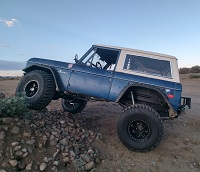
Gunnibronco - Official CCB Member

- Posts: 4074
- Joined: Mon Jan 03, 2011 5:07 pm
- Location: Gardnerville, NV
Re: Where has CCB Been?????
Awesome! what an amazing experience that must have been. I noticed a helmet cam you have any video to post?
That guy John.... whatta Jerk.
-
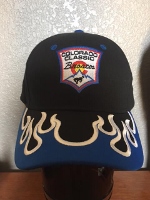
D&D72 - Official CCB Member

- Posts: 989
- Joined: Sun Sep 11, 2011 9:49 pm
- Location: Henderson, Co. Grand Lake, Co
Re: Where has CCB Been?????
Yeah, I've got lots of helmet cam video. I'm going to do some editing on my favorites & post it up. I've never edited video, so it probably won't be anything fancy. I'll put up a link when I get it done.
"America is at that awkward stage. It's too late to work within the system, but too early to shoot the bastards." – Claire Wolfe
74-AWB 98", ZF5, Atlas4, TGW HP1060 and HP1014 axles, ARBs, 37's, 3.5" lift-5.5" front coil springs, Tahoe rear springs, EFI 302, h-boost, York OBA, 4x4x2, custom dash & gauges
72 U15- Explorer Sport-Candyapple Red (1 of 141)
74-AWB 98", ZF5, Atlas4, TGW HP1060 and HP1014 axles, ARBs, 37's, 3.5" lift-5.5" front coil springs, Tahoe rear springs, EFI 302, h-boost, York OBA, 4x4x2, custom dash & gauges
72 U15- Explorer Sport-Candyapple Red (1 of 141)
-

Gunnibronco - Official CCB Member

- Posts: 4074
- Joined: Mon Jan 03, 2011 5:07 pm
- Location: Gardnerville, NV
Where has CCB Been?????
Here I am at Devils Tower in Wyoming today.
You do not have the required permissions to view the files attached to this post.
-
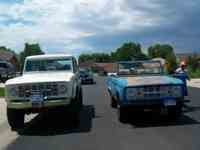
casadejohnson - Official CCB Member

- Posts: 708
- Joined: Tue Oct 05, 2010 8:30 pm
- Location: Greeley
Re: Where has CCB Been?????
Looks like you're getting ready to get a drink straight from the source.
Stroppe'd
1972 Sport, 302, 3 speed with old school Duff floor shifter, T shift Dana 20 with JB Fab twin stick, 4.11 gears with Trac-loc, Lincoln hydroboost, Chevy disc conversion, WH gas lift gate shock kit, 33" Duratrac tires on slots and about 2.5" of lift, Stroppe installed: bumper braces, dual shocks on all four corners, GM power steering, trans cooler mount, auto shift column, rollbar.
The Terrible One
1972 Sport uncut, 302, C4 with 1974 column , T shift Dana 20, 3.50 gears w/ limited slip, 1966 U13 Roadster kick panel, and factory power steering.
1973 Stroppe Baja project
1972 Sport, 302, 3 speed with old school Duff floor shifter, T shift Dana 20 with JB Fab twin stick, 4.11 gears with Trac-loc, Lincoln hydroboost, Chevy disc conversion, WH gas lift gate shock kit, 33" Duratrac tires on slots and about 2.5" of lift, Stroppe installed: bumper braces, dual shocks on all four corners, GM power steering, trans cooler mount, auto shift column, rollbar.
The Terrible One
1972 Sport uncut, 302, C4 with 1974 column , T shift Dana 20, 3.50 gears w/ limited slip, 1966 U13 Roadster kick panel, and factory power steering.
1973 Stroppe Baja project
-
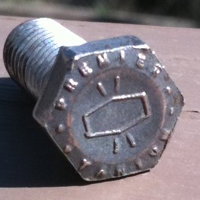
akaFrankCastle - Official CCB Member

- Posts: 4901
- Images: 0
- Joined: Wed Oct 27, 2010 5:25 pm
- Location: Colorado Springs
Re: Where has CCB Been?????
Dan - I can't believe you'd even post that pic with a group like this... Wide open
1973 Bronco, 351 SEFI, Locked, discs, 35's ZF-5spd and Atlas 4spd. 235:1 Crawl Ratio. It may be ugly, but it's slow.
http://www.ucora.org
http://www.ucora.org
-

Jesus_man - Official CCB Member

- Posts: 5987
- Joined: Thu Nov 11, 2010 9:36 am
- Location: California
Where has CCB Been?????
At Mt Rushmore today.
You do not have the required permissions to view the files attached to this post.
-

casadejohnson - Official CCB Member

- Posts: 708
- Joined: Tue Oct 05, 2010 8:30 pm
- Location: Greeley
Where has CCB Been?????
I like this one best.
You do not have the required permissions to view the files attached to this post.
-

casadejohnson - Official CCB Member

- Posts: 708
- Joined: Tue Oct 05, 2010 8:30 pm
- Location: Greeley
Re: Where has CCB Been?????
We did the same trip a few years ago. Cept we went the other way. I think we did SD first, then WY.
1973 Bronco, 351 SEFI, Locked, discs, 35's ZF-5spd and Atlas 4spd. 235:1 Crawl Ratio. It may be ugly, but it's slow.
http://www.ucora.org
http://www.ucora.org
-

Jesus_man - Official CCB Member

- Posts: 5987
- Joined: Thu Nov 11, 2010 9:36 am
- Location: California
Where has CCB Been?????
I did this with my parents 30 years ago so now I'm doing it with my kids and brought my dad along. It's a lot different than my last visit.
-

casadejohnson - Official CCB Member

- Posts: 708
- Joined: Tue Oct 05, 2010 8:30 pm
- Location: Greeley
Re: Where has CCB Been?????
Mrs D&D72 representing at the Rockies home opener. Rocks got  but it was a good time.
but it was a good time.
 but it was a good time.
but it was a good time.You do not have the required permissions to view the files attached to this post.
That guy John.... whatta Jerk.
-

D&D72 - Official CCB Member

- Posts: 989
- Joined: Sun Sep 11, 2011 9:49 pm
- Location: Henderson, Co. Grand Lake, Co
Where has CCB Been?????
At Carhenge in Nebraska this afternoon.
You do not have the required permissions to view the files attached to this post.
-

casadejohnson - Official CCB Member

- Posts: 708
- Joined: Tue Oct 05, 2010 8:30 pm
- Location: Greeley
Re: Where has CCB Been?????
Damn, Jeremy, you're hitting all the cool sites. Gonna stop by the world's largest ball of twine in Cawker City, KS?
- Viperwolf1
Re: Where has CCB Been?????
Viperwolf1 wrote:Damn, Jeremy, you're hitting all the cool sites. Gonna stop by the world's largest ball of twine in Cawker City, KS?
It was Carhenge or Wounded Knee for the last stop of the journey. I think we made the right choice! ( Or Maybe it was the choice that got us home sooner )
-

casadejohnson - Official CCB Member

- Posts: 708
- Joined: Tue Oct 05, 2010 8:30 pm
- Location: Greeley
Re: Where has CCB Been?????
Here are some videos I've edited together to show off some of my favorite runs on my trip to Alaska. We got to name our "first descents".
Post up if the links don't work and I'll keep trying. Successfully posting these videos has not gone smoothly.
Make sure you click on the "HD" button on facebook, and set the youtube videos to high def.
A crazy heli landing, with only the front half of the heli on the snow, and an awesome, 1st descent of a steep coulior, "Highball"
https://www.facebook.com/video/video.ph ... 7209632710
A sweet, long, coulior "Coogans"
https://www.facebook.com/photo.php?v=32 ... permPage=1
Another 1st descent, I named it "Hazard County", this one is for JD and the Hockeykids. Lowered in "on belay" so we didn't fall in:
https://www.facebook.com/photo.php?v=32 ... permPage=1
Now for the big, bad "Pontoon", this changed everything. Truly, the scariest run of my life.
Flight up, landing, and top entrance:
http://www.youtube.com/watch?v=yTiEg1Cu ... ture=share
2nd half of the traverse in, and 58* coulior that followed. I didn't edit this, I wanted to show how long and tedious the entrance was. A real "NO FALL ZONE"
http://www.youtube.com/watch?v=rSbvYPtk ... ture=share
Post up if the links don't work and I'll keep trying. Successfully posting these videos has not gone smoothly.
Make sure you click on the "HD" button on facebook, and set the youtube videos to high def.
A crazy heli landing, with only the front half of the heli on the snow, and an awesome, 1st descent of a steep coulior, "Highball"
https://www.facebook.com/video/video.ph ... 7209632710
A sweet, long, coulior "Coogans"
https://www.facebook.com/photo.php?v=32 ... permPage=1
Another 1st descent, I named it "Hazard County", this one is for JD and the Hockeykids. Lowered in "on belay" so we didn't fall in:
https://www.facebook.com/photo.php?v=32 ... permPage=1
Now for the big, bad "Pontoon", this changed everything. Truly, the scariest run of my life.
Flight up, landing, and top entrance:
http://www.youtube.com/watch?v=yTiEg1Cu ... ture=share
2nd half of the traverse in, and 58* coulior that followed. I didn't edit this, I wanted to show how long and tedious the entrance was. A real "NO FALL ZONE"
http://www.youtube.com/watch?v=rSbvYPtk ... ture=share
"America is at that awkward stage. It's too late to work within the system, but too early to shoot the bastards." – Claire Wolfe
74-AWB 98", ZF5, Atlas4, TGW HP1060 and HP1014 axles, ARBs, 37's, 3.5" lift-5.5" front coil springs, Tahoe rear springs, EFI 302, h-boost, York OBA, 4x4x2, custom dash & gauges
72 U15- Explorer Sport-Candyapple Red (1 of 141)
74-AWB 98", ZF5, Atlas4, TGW HP1060 and HP1014 axles, ARBs, 37's, 3.5" lift-5.5" front coil springs, Tahoe rear springs, EFI 302, h-boost, York OBA, 4x4x2, custom dash & gauges
72 U15- Explorer Sport-Candyapple Red (1 of 141)
-

Gunnibronco - Official CCB Member

- Posts: 4074
- Joined: Mon Jan 03, 2011 5:07 pm
- Location: Gardnerville, NV
Re: Where has CCB Been?????
Wounded knee was cool only because the story. There really isn't much there to see.
I should have told you about Mrs. Kuny's fri-bread! 20 miles down a dirt road to get there, but it was worth it!!!
Chad, that terrain is insane! Over my skill level to be sure, but the snow looks awesome! Looks similar to the best snow days we had on Wolf Creek!
J.D.
I should have told you about Mrs. Kuny's fri-bread! 20 miles down a dirt road to get there, but it was worth it!!!
Chad, that terrain is insane! Over my skill level to be sure, but the snow looks awesome! Looks similar to the best snow days we had on Wolf Creek!
J.D.
1973 Bronco, 351 SEFI, Locked, discs, 35's ZF-5spd and Atlas 4spd. 235:1 Crawl Ratio. It may be ugly, but it's slow.
http://www.ucora.org
http://www.ucora.org
-

Jesus_man - Official CCB Member

- Posts: 5987
- Joined: Thu Nov 11, 2010 9:36 am
- Location: California
Re: Where has CCB Been?????
Colorado powder is lighter, but doesn't stick to steep slopes, and is much more dangerous. Most of the time we were only boot to knee deep. If we were riding snow like that in Colorado, we would have been eyeball deep & needed snorkels. But that kind of terrain and snow is not rideable here.
Intercontinental snowpacks (Colorado) are shallower and develop more problems that lead to worse avalanche danger. I took an avalanche class in 1998, and they opened the class by stating that we live in "the most dangerous" area in the world. The Silverton Avalanche School is the oldest in America, and has some of the most highly respected guys in the industry teaching.
Maritime snowpacks (Cali, AK, BC) are usually safer because of the increased depth of the snowpack, more moisture, warmer temps, and less solar radiation exposure (it gets too complicated to explain, and I don't even understand/remember everything I learned back then). So it opens up more backcountry options.
Generally, we have to wait till spring, for the snowpack to get safe enough to ride steep lines. The warm temps in spring help all the layers in the snowpack to melt together, and form one big/deep layer, instead of multiple layers & sliding surfaces that lead to avalanches. Then in spring, you have to worry about wet slides, when the snow just melts into a big slushie and falls off the mountain. A huge wet slide, near Silverton, just killed a Crested Butte local, about a week ago.
This ends your unexpected, probably unwanted, avalanche class for today.
Intercontinental snowpacks (Colorado) are shallower and develop more problems that lead to worse avalanche danger. I took an avalanche class in 1998, and they opened the class by stating that we live in "the most dangerous" area in the world. The Silverton Avalanche School is the oldest in America, and has some of the most highly respected guys in the industry teaching.
Maritime snowpacks (Cali, AK, BC) are usually safer because of the increased depth of the snowpack, more moisture, warmer temps, and less solar radiation exposure (it gets too complicated to explain, and I don't even understand/remember everything I learned back then). So it opens up more backcountry options.
Generally, we have to wait till spring, for the snowpack to get safe enough to ride steep lines. The warm temps in spring help all the layers in the snowpack to melt together, and form one big/deep layer, instead of multiple layers & sliding surfaces that lead to avalanches. Then in spring, you have to worry about wet slides, when the snow just melts into a big slushie and falls off the mountain. A huge wet slide, near Silverton, just killed a Crested Butte local, about a week ago.
This ends your unexpected, probably unwanted, avalanche class for today.
"America is at that awkward stage. It's too late to work within the system, but too early to shoot the bastards." – Claire Wolfe
74-AWB 98", ZF5, Atlas4, TGW HP1060 and HP1014 axles, ARBs, 37's, 3.5" lift-5.5" front coil springs, Tahoe rear springs, EFI 302, h-boost, York OBA, 4x4x2, custom dash & gauges
72 U15- Explorer Sport-Candyapple Red (1 of 141)
74-AWB 98", ZF5, Atlas4, TGW HP1060 and HP1014 axles, ARBs, 37's, 3.5" lift-5.5" front coil springs, Tahoe rear springs, EFI 302, h-boost, York OBA, 4x4x2, custom dash & gauges
72 U15- Explorer Sport-Candyapple Red (1 of 141)
-

Gunnibronco - Official CCB Member

- Posts: 4074
- Joined: Mon Jan 03, 2011 5:07 pm
- Location: Gardnerville, NV
Re: Where has CCB Been?????
here's one of many more to come.
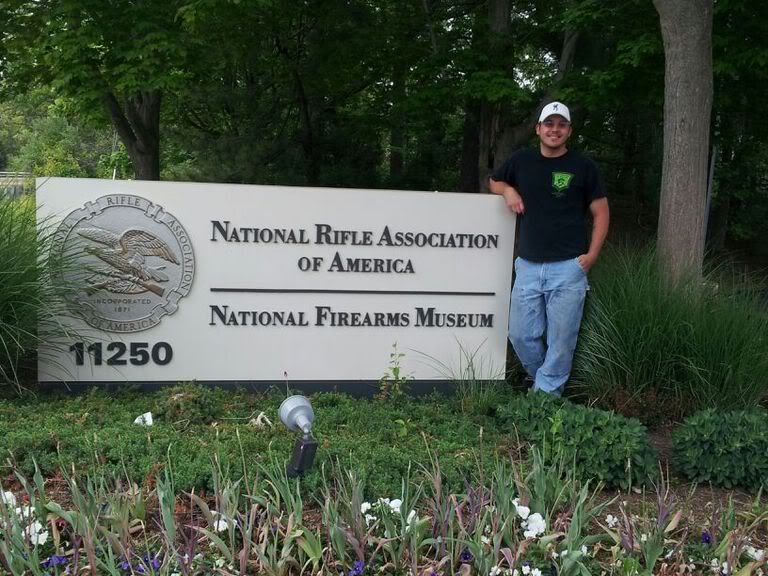

Rob
74 Ranger EFI351w, 4r70w, ARB 5.13 9in, ARB 5.13D44, and a bunch of other goodies. Best of all the family memories.
04 Mustang Cobra, KenneBell 2.2 feeding a lot of boost on E85. Tire shredding machine
New project: 77 Bronco Ranger, body work and more body work.
Very little left of a 72 durango tan explorer sport
74 Ranger EFI351w, 4r70w, ARB 5.13 9in, ARB 5.13D44, and a bunch of other goodies. Best of all the family memories.
04 Mustang Cobra, KenneBell 2.2 feeding a lot of boost on E85. Tire shredding machine
New project: 77 Bronco Ranger, body work and more body work.
Very little left of a 72 durango tan explorer sport
-

ZOSO - Moderator

- Posts: 3908
- Joined: Mon Nov 15, 2010 4:58 pm
- Location: Henderson, Co
Re: Where has CCB Been?????
Ahh, cool place!
1973 Bronco, 351 SEFI, Locked, discs, 35's ZF-5spd and Atlas 4spd. 235:1 Crawl Ratio. It may be ugly, but it's slow.
http://www.ucora.org
http://www.ucora.org
-

Jesus_man - Official CCB Member

- Posts: 5987
- Joined: Thu Nov 11, 2010 9:36 am
- Location: California
Re: Where has CCB Been?????
That place was awesome. I could spend hours walking through there. I've got a bunch of pics I'll get up once I get back.
Rob
74 Ranger EFI351w, 4r70w, ARB 5.13 9in, ARB 5.13D44, and a bunch of other goodies. Best of all the family memories.
04 Mustang Cobra, KenneBell 2.2 feeding a lot of boost on E85. Tire shredding machine
New project: 77 Bronco Ranger, body work and more body work.
Very little left of a 72 durango tan explorer sport
74 Ranger EFI351w, 4r70w, ARB 5.13 9in, ARB 5.13D44, and a bunch of other goodies. Best of all the family memories.
04 Mustang Cobra, KenneBell 2.2 feeding a lot of boost on E85. Tire shredding machine
New project: 77 Bronco Ranger, body work and more body work.
Very little left of a 72 durango tan explorer sport
-

ZOSO - Moderator

- Posts: 3908
- Joined: Mon Nov 15, 2010 4:58 pm
- Location: Henderson, Co
Re: Where has CCB Been?????
Discovery just after coming in the building. They were closing off the area to the public so we got pics as soon as we could.
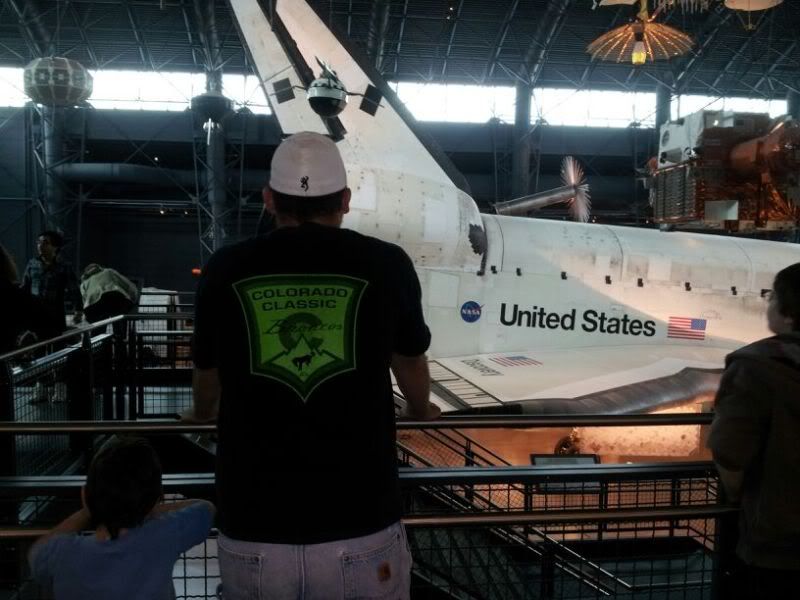

Rob
74 Ranger EFI351w, 4r70w, ARB 5.13 9in, ARB 5.13D44, and a bunch of other goodies. Best of all the family memories.
04 Mustang Cobra, KenneBell 2.2 feeding a lot of boost on E85. Tire shredding machine
New project: 77 Bronco Ranger, body work and more body work.
Very little left of a 72 durango tan explorer sport
74 Ranger EFI351w, 4r70w, ARB 5.13 9in, ARB 5.13D44, and a bunch of other goodies. Best of all the family memories.
04 Mustang Cobra, KenneBell 2.2 feeding a lot of boost on E85. Tire shredding machine
New project: 77 Bronco Ranger, body work and more body work.
Very little left of a 72 durango tan explorer sport
-

ZOSO - Moderator

- Posts: 3908
- Joined: Mon Nov 15, 2010 4:58 pm
- Location: Henderson, Co
Re: Where has CCB Been?????
That is amazing to be that close to a Space Shuttle. Great pic.
"I truly believe that good will outweigh evil, but there won't be peace on earth until the power of love overcomes the love of power" - Jimi Hendrix
-
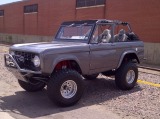
Entourage - Official CCB Member

- Posts: 3275
- Joined: Wed Sep 29, 2010 4:45 pm
- Location: Gilbert, Arizona
Re: Where has CCB Been?????
Rob,
The pic with the Shuttle is sweet! What a cool opportunity.
The pic with the Shuttle is sweet! What a cool opportunity.
"America is at that awkward stage. It's too late to work within the system, but too early to shoot the bastards." – Claire Wolfe
74-AWB 98", ZF5, Atlas4, TGW HP1060 and HP1014 axles, ARBs, 37's, 3.5" lift-5.5" front coil springs, Tahoe rear springs, EFI 302, h-boost, York OBA, 4x4x2, custom dash & gauges
72 U15- Explorer Sport-Candyapple Red (1 of 141)
74-AWB 98", ZF5, Atlas4, TGW HP1060 and HP1014 axles, ARBs, 37's, 3.5" lift-5.5" front coil springs, Tahoe rear springs, EFI 302, h-boost, York OBA, 4x4x2, custom dash & gauges
72 U15- Explorer Sport-Candyapple Red (1 of 141)
-

Gunnibronco - Official CCB Member

- Posts: 4074
- Joined: Mon Jan 03, 2011 5:07 pm
- Location: Gardnerville, NV
Re: Where has CCB Been?????
Oh I'll get all of them posted for the people not on my Facebook. What I have posted is only a very few. Still about 300 more pics.
Rob
74 Ranger EFI351w, 4r70w, ARB 5.13 9in, ARB 5.13D44, and a bunch of other goodies. Best of all the family memories.
04 Mustang Cobra, KenneBell 2.2 feeding a lot of boost on E85. Tire shredding machine
New project: 77 Bronco Ranger, body work and more body work.
Very little left of a 72 durango tan explorer sport
74 Ranger EFI351w, 4r70w, ARB 5.13 9in, ARB 5.13D44, and a bunch of other goodies. Best of all the family memories.
04 Mustang Cobra, KenneBell 2.2 feeding a lot of boost on E85. Tire shredding machine
New project: 77 Bronco Ranger, body work and more body work.
Very little left of a 72 durango tan explorer sport
-

ZOSO - Moderator

- Posts: 3908
- Joined: Mon Nov 15, 2010 4:58 pm
- Location: Henderson, Co
Re: Where has CCB Been?????
I thought of kirk for that one. That was at the Korean war memorial. I also have a pic for you and other non libtards.
Rob
74 Ranger EFI351w, 4r70w, ARB 5.13 9in, ARB 5.13D44, and a bunch of other goodies. Best of all the family memories.
04 Mustang Cobra, KenneBell 2.2 feeding a lot of boost on E85. Tire shredding machine
New project: 77 Bronco Ranger, body work and more body work.
Very little left of a 72 durango tan explorer sport
74 Ranger EFI351w, 4r70w, ARB 5.13 9in, ARB 5.13D44, and a bunch of other goodies. Best of all the family memories.
04 Mustang Cobra, KenneBell 2.2 feeding a lot of boost on E85. Tire shredding machine
New project: 77 Bronco Ranger, body work and more body work.
Very little left of a 72 durango tan explorer sport
-

ZOSO - Moderator

- Posts: 3908
- Joined: Mon Nov 15, 2010 4:58 pm
- Location: Henderson, Co
Re: Where has CCB Been?????
Post it up! Some of us libtards like trucks, guns etc. They just have to be electric trucks and cap guns or we get skeerd.
-
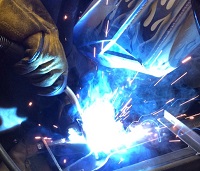
Justin - Official CCB Member

- Posts: 6198
- Images: 0
- Joined: Sat Oct 09, 2010 11:04 pm
- Location: Lakewood
Re: Where has CCB Been?????
So here are some where has CCB been pics from my trip to DC this past week.

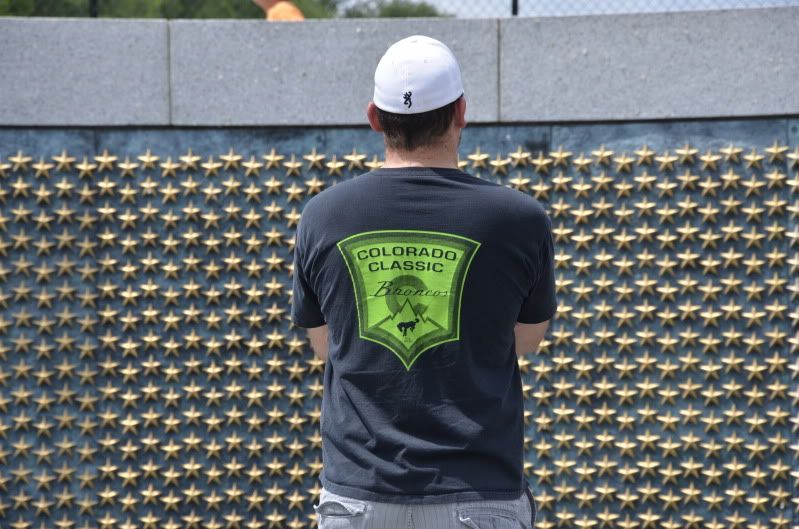


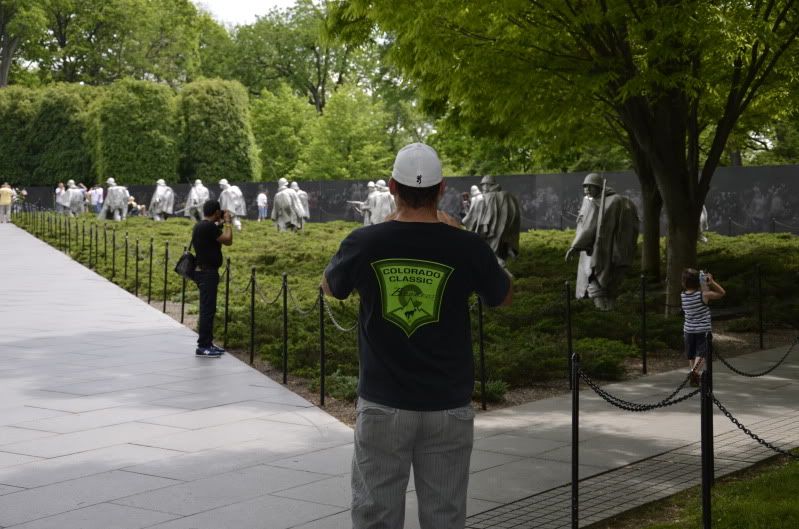
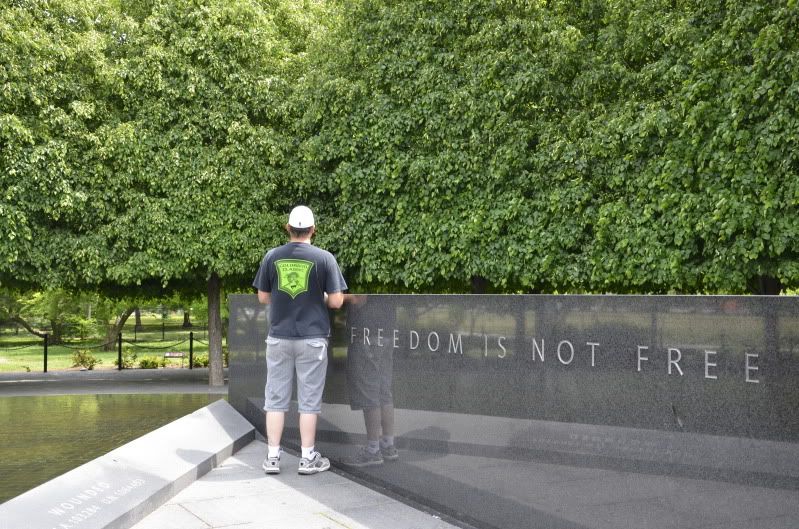
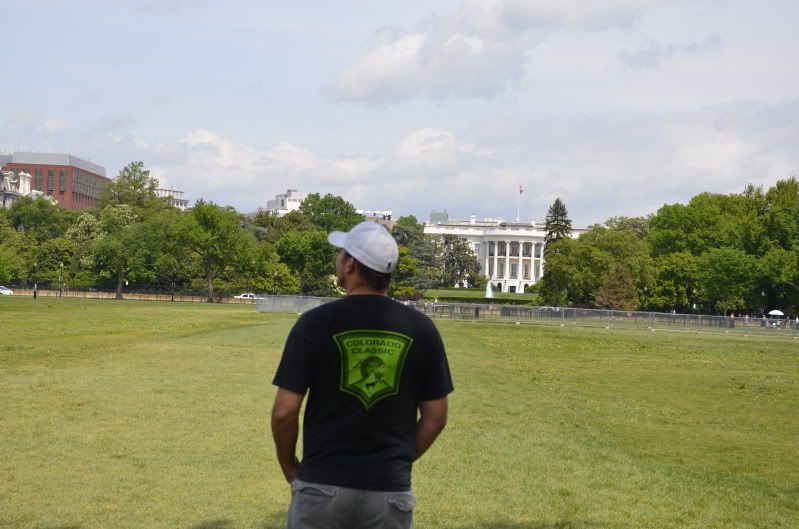
And the FINAL pic. This is just for Dan.








And the FINAL pic. This is just for Dan.

Rob
74 Ranger EFI351w, 4r70w, ARB 5.13 9in, ARB 5.13D44, and a bunch of other goodies. Best of all the family memories.
04 Mustang Cobra, KenneBell 2.2 feeding a lot of boost on E85. Tire shredding machine
New project: 77 Bronco Ranger, body work and more body work.
Very little left of a 72 durango tan explorer sport
74 Ranger EFI351w, 4r70w, ARB 5.13 9in, ARB 5.13D44, and a bunch of other goodies. Best of all the family memories.
04 Mustang Cobra, KenneBell 2.2 feeding a lot of boost on E85. Tire shredding machine
New project: 77 Bronco Ranger, body work and more body work.
Very little left of a 72 durango tan explorer sport
-

ZOSO - Moderator

- Posts: 3908
- Joined: Mon Nov 15, 2010 4:58 pm
- Location: Henderson, Co
Re: Where has CCB Been?????
zillacon wrote:Ding! Ding! We have a winner! Thats flippin classic.
Thought you'd like that.
Rob
74 Ranger EFI351w, 4r70w, ARB 5.13 9in, ARB 5.13D44, and a bunch of other goodies. Best of all the family memories.
04 Mustang Cobra, KenneBell 2.2 feeding a lot of boost on E85. Tire shredding machine
New project: 77 Bronco Ranger, body work and more body work.
Very little left of a 72 durango tan explorer sport
74 Ranger EFI351w, 4r70w, ARB 5.13 9in, ARB 5.13D44, and a bunch of other goodies. Best of all the family memories.
04 Mustang Cobra, KenneBell 2.2 feeding a lot of boost on E85. Tire shredding machine
New project: 77 Bronco Ranger, body work and more body work.
Very little left of a 72 durango tan explorer sport
-

ZOSO - Moderator

- Posts: 3908
- Joined: Mon Nov 15, 2010 4:58 pm
- Location: Henderson, Co
Re: Where has CCB Been?????
Sorry--no coliseums, cows, cathedrals, or memorials...just me at Myrtle Beach in South Carolina.


Definition of cool.
-
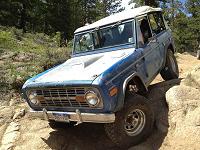
Gregg - Official CCB Member

- Posts: 1060
- Joined: Sun Nov 07, 2010 10:08 am
Where has CCB Been?????
Here is August and Wyatt at the capital

-

casadejohnson - Official CCB Member

- Posts: 708
- Joined: Tue Oct 05, 2010 8:30 pm
- Location: Greeley
148 posts
• Page 2 of 5 • 1, 2, 3, 4, 5
Who is online
Users browsing this forum: No registered users and 8 guests
